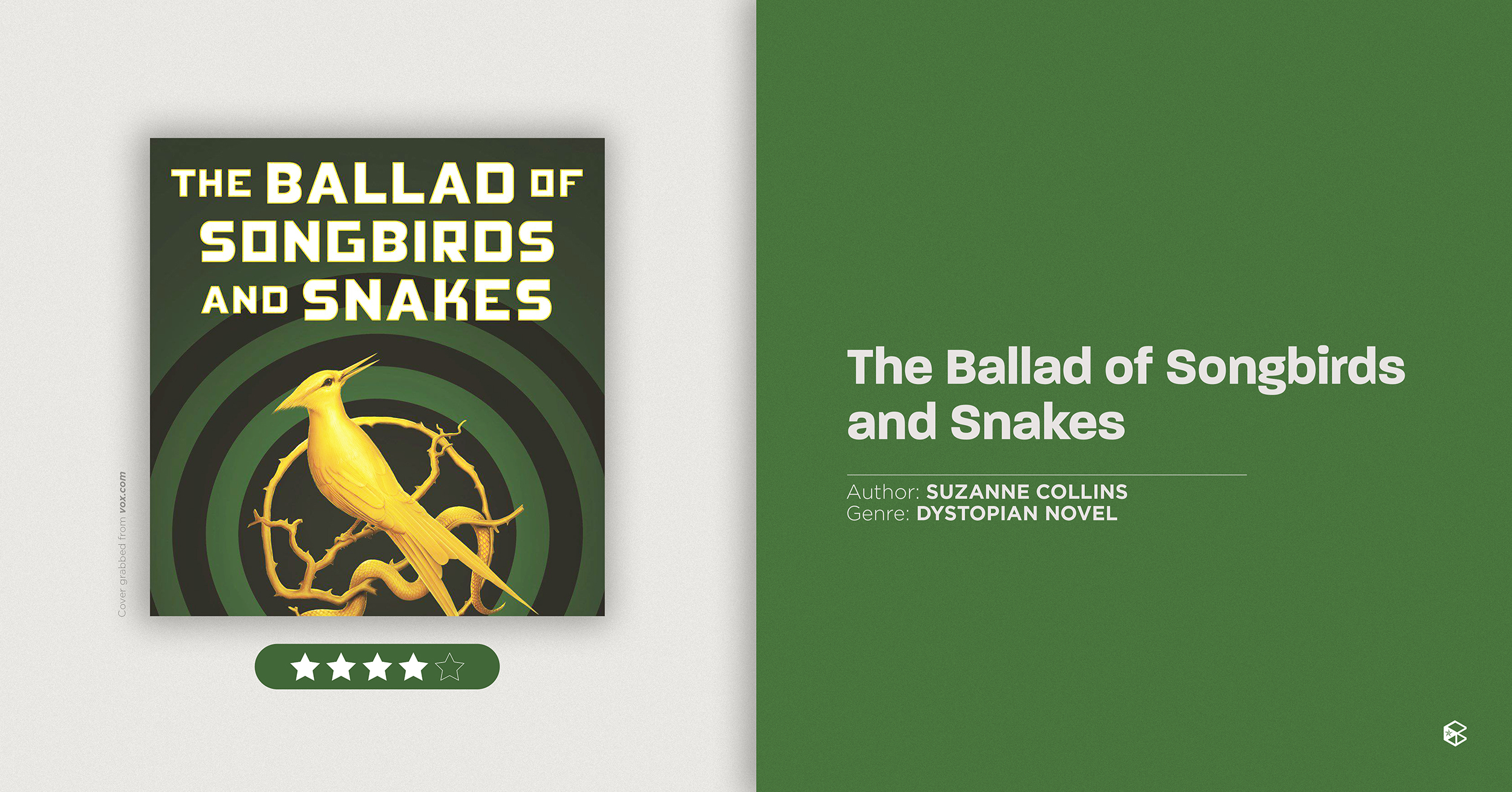This is not Katniss Everdeen’s Panem.
Set 64 years prior to the Mockingjay’s first stint in the arena, The Ballad of Songbirds and Snakes is a prequel novel to Suzanne Collins’ much-acclaimed Hunger Games trilogy. Ironically centering one of the vilest villains in the Hunger Games trilogy, The Ballad of Songbirds and Snakes revolves around an eighteen-year-old Coriolanus Snow. Before becoming the president of Panem and the villain in Katniss’ story, Coriolanus was the hero of his own—or so it would seem.
Born into the lap of luxury and stripped of fortune by the uprising of the districts and the succeeding war, Coriolanus clings onto ambitions of a bright future with nothing but his good name, spotless image, and his wits about him. Everything seems on track for the young Snow until the 10th annual Hunger Games, where he is assigned to mentor the vivacious Lucy Gray Baird; the female tribute from District 12.
These two characters present contrasting personalities that were banded together by a mutual need—Coriolanus, with his high-bred charms, ambition and ceaseless thirst for power, and Lucy Gray, with her unabashed demeanor, razor-sharp wits and ability to turn any situation into a halting performance. This unlikely duo gives the early days of the Hunger Games it’s first real show.
In contrast to later games, the 10th annual hunger games was little more than a cruel, distasteful circus act. Tributes were treated as little more than animals during their brief stay at the Capitol, and then unceremoniously thrown into a weathered old arena to face death with no means of sustenance or incentive to survive.
The people of the Capitol detested the games up until that point. However, it was Coriolanus’ ideas which began to guide the primitive Hunger Games into becoming a full-fledged glamorously twisted reality show.
Inside the mind of a psychopath
With this installment, Collins did something near impossible; telling a villain’s story without eliciting a shred sympathy from readers. Coriolanus’ character arc is an example of how the potential for good morphs into evil, one choice at a time. As the story unravels, it is clear that Coriolanus’ lust for power and belief that he is above others further gives readers a distorted look at Panem in the days of the 10th hunger games.
Lucy Gray, on the other hand is a more sympathetic character; admittedly reminiscent of Katniss Everdeen, without being a ripoff of the character. Her southern drawl and show stopping performances are absolutely magnificent to read.
Much of this book is intentionally problematic, which is perhaps what made it such an interesting read. Coriolanus’s actions, and thought process, are pure poison. The inevitable romance between him and Lucy Gray is nothing short of toxic—with veiled self-interest on both sides. It’s a well-pulled take on the rarely-used lovers-to-enemies trope, and a narrative on how circumstance forges a love based solely on need and self-preservation.
Needless to say, this book is clearly not a love story; it is not a story of redemption. If anything, it is a criticism of the state of human morality and society.
Moral criticism and social commentary
The Ballad of Songbirds and Snakes is heavily laced with questions and teachings on human morality. This is made almost painfully obvious from the start, which is perhaps what makes this book a much slower read than the original trilogy.
The pages are still packed with Collins’ signature halting plot twists and array of characters. However, some of these plot twists and characters clearly could have done more to add to the story, but were cut short too soon. The amount of social commentary and moral questions came with the price of the story’s overall pacing. The buildup to events dragged on for pages and pages in some places, while in others, the action was unpacked in as little as a few sentences.
The array of characters surrounding Coriolanus and Lucy Gray brilliantly illustrated the way a population’s views shift as they get desensitised towards gruesome events. The settings painted a stark contrast between two sides who were both recovering from war—and the musical scenes were nothing short of splendid.
That being said, this novel is still an enjoyable, eye-opening read.
In many ways, The Ballad of Songbirds and Snakes is a reminder of how even the most gruesome events can be sensationalized; comparable to the public response to the Hunger Games films and the franchise as a whole, with audiences around the world enthusiastically cheering for a story that was meant to be a metaphor for the decline of society’s moral compass.
The Ballad of Songbirds and Snakes finishes with a semi open-ended ending. And as always, Collins leaves readers with questions to be mulled over long after the book has been shut.


